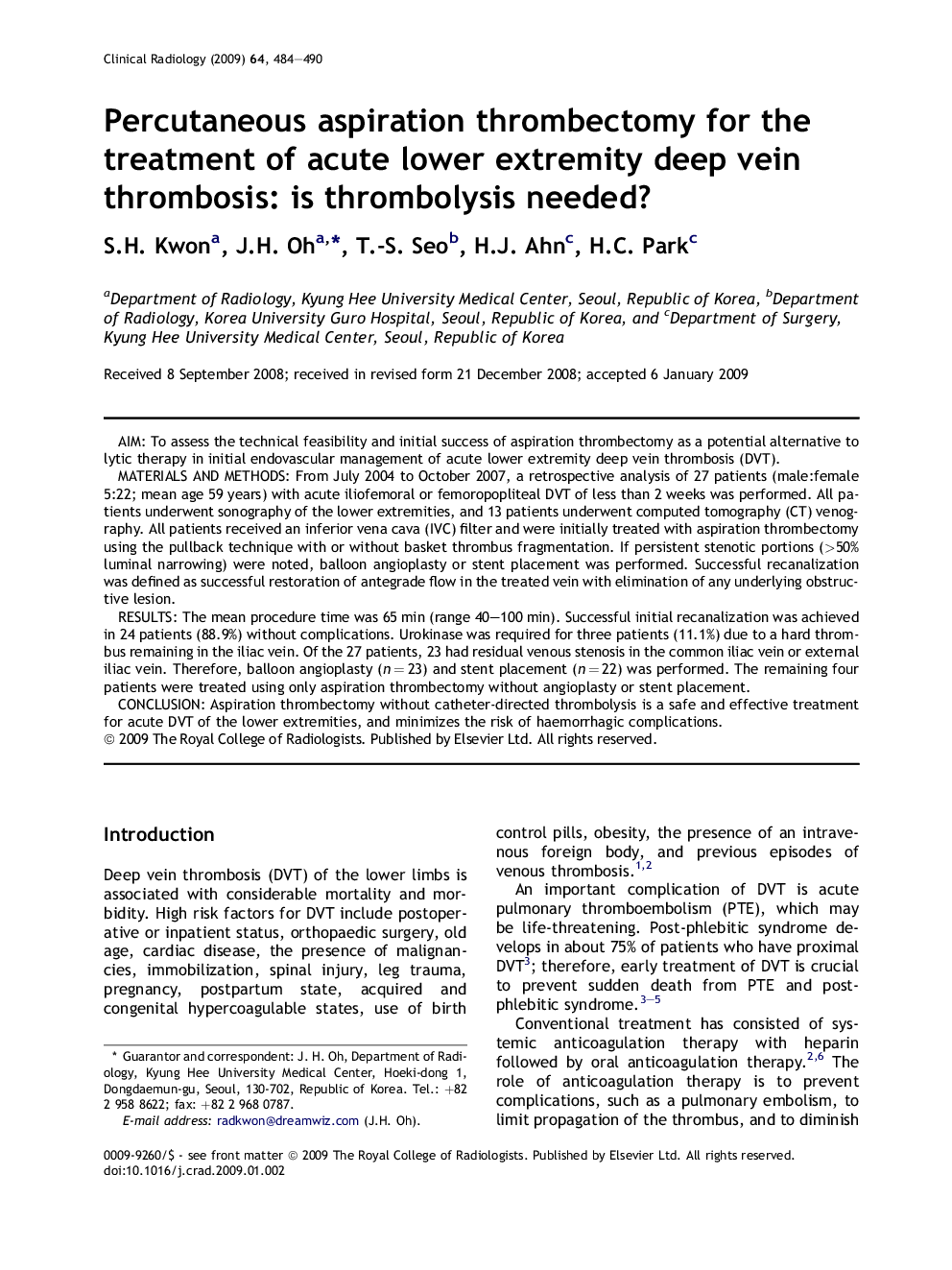| Article ID | Journal | Published Year | Pages | File Type |
|---|---|---|---|---|
| 3983266 | Clinical Radiology | 2009 | 7 Pages |
AimTo assess the technical feasibility and initial success of aspiration thrombectomy as a potential alternative to lytic therapy in initial endovascular management of acute lower extremity deep vein thrombosis (DVT).Materials and MethodsFrom July 2004 to October 2007, a retrospective analysis of 27 patients (male:female 5:22; mean age 59 years) with acute iliofemoral or femoropopliteal DVT of less than 2 weeks was performed. All patients underwent sonography of the lower extremities, and 13 patients underwent computed tomography (CT) venography. All patients received an inferior vena cava (IVC) filter and were initially treated with aspiration thrombectomy using the pullback technique with or without basket thrombus fragmentation. If persistent stenotic portions (>50% luminal narrowing) were noted, balloon angioplasty or stent placement was performed. Successful recanalization was defined as successful restoration of antegrade flow in the treated vein with elimination of any underlying obstructive lesion.ResultsThe mean procedure time was 65 min (range 40–100 min). Successful initial recanalization was achieved in 24 patients (88.9%) without complications. Urokinase was required for three patients (11.1%) due to a hard thrombus remaining in the iliac vein. Of the 27 patients, 23 had residual venous stenosis in the common iliac vein or external iliac vein. Therefore, balloon angioplasty (n = 23) and stent placement (n = 22) was performed. The remaining four patients were treated using only aspiration thrombectomy without angioplasty or stent placement.ConclusionAspiration thrombectomy without catheter-directed thrombolysis is a safe and effective treatment for acute DVT of the lower extremities, and minimizes the risk of haemorrhagic complications.
